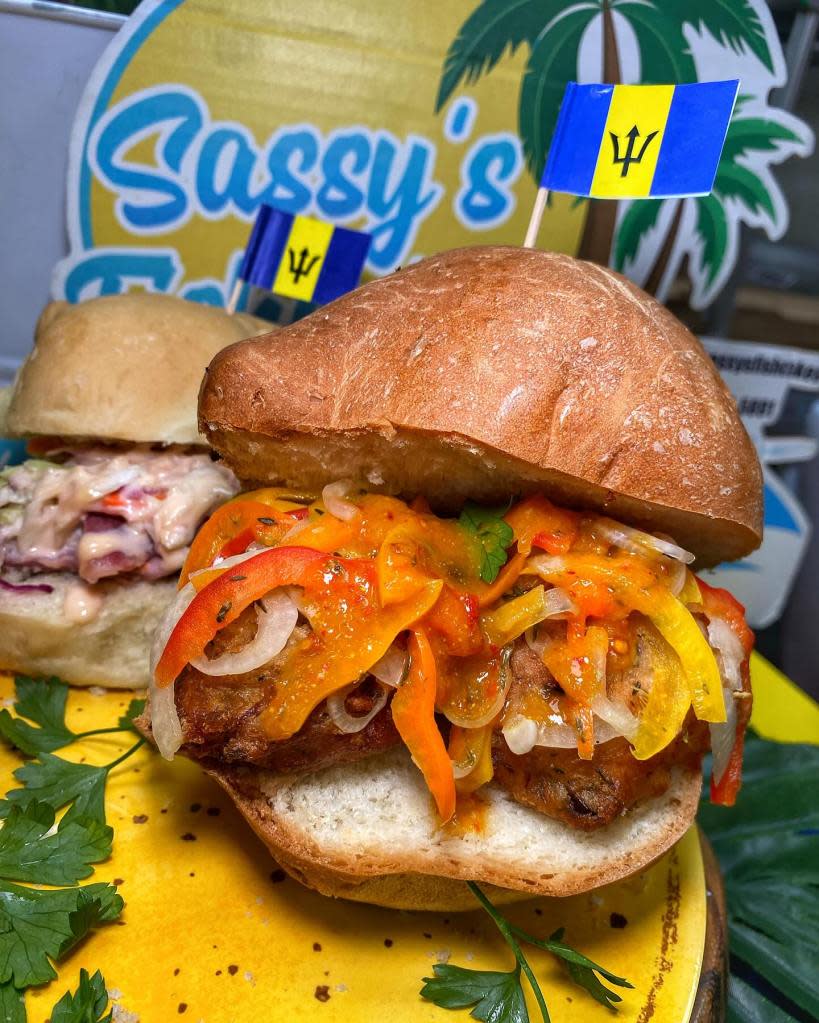At Queens Night Market, inflation doesn’t exist — you can still eat your way around the world for just $5

They’re kind of a big deal.
So much has changed since 2015, the year the Queens Night Market first set up camp in Flushing Meadows, promising $5 snacks and meals from a collection of mom-and-pop vendors — a group as diverse as you’d expect to find in Gotham’s most global borough.
Nine years down the road, the world may seem different — and much more expensive — but the market remains much the same. Back for yet another season, running Saturdays from 4 p.m. to midnight until the end of October, you’ll still pay no more than $5 or $6 per dish, and the list of vendors has only grown.
And at a time when the cost of a fun night out with friends and family is more than too many New Yorkers can afford, one of the city’s best food markets — hosting more than 3 million visitors since the early days — seems more appealing than ever.
“This might sound idealistic, but our mission has always been, let’s be New York City’s most affordable, most diverse and most accessible community space,” founder John Wang told The Post.
“All the decisions we make along the way aspire to that mission. That’s what makes it special,” he said.


Well, that and the actual food.
The selection of eats on any given Saturday offers a trip around the world, from hawawshi (Egyptian-style burgers) to Mexican huaraches, Ecuadorian ceviche to cachapas (Venezuelan corn pancakes), sega wat (Ethiopian beef stew) to sambuxa (Sudanese samosas).
When your job is to represent some of the planet’s most diverse zip codes, home to expats speaking roughly 130 different languages, that’s the kind of menu you get.
“We’ve now represented about 95 countries through our food,” Wang said proudly.


“That has also trickled down to our visitors — having our diverse vendors leads to a super diverse audience,” he said.
Hundreds of purveyors apply — partly because corporate sponsor Citizens Financial Group subsidizes vendor fees at a rate of about 50%, which allows vendors to offer their food and drink more affordably.
But one of the reasons Wang feels the market has been so successful as an affordable alternative is the participants’ keen grasp of their roles in creating this by-the-community, for-the-community event, Wang said.
“Huge kudos to the vendors — part of what makes it work is that their motive isn’t maximizing profits,” he confessed.


“What they sell for $5 or $6 could easily go for $10 or $15 elsewhere — most of them are there because they want to share their stories and their food. Profit is a nice thing for everyone but that’s not their only reason for being there,” Wang said.
The model has been tried elsewhere, he confided, but as far as he’s seen, no market has been able to maintain a similar commitment to low costs.
“A year or two after we opened, a lot of new markets thought the trick to our buzziness was the price cap, and a lot of events tried to copy that,” he recalled.
“After a year or two, they let it go.”


By Wang’s count, the market has helped to launch at least 400 small businesses, even if they’ve established themselves only to sell at the market, which does happen.
Sierra Leonean jollof rice and cassava stew, Barbadian bread and two, Bangladeshi fried street sandwiches and chhola bhuna, Argentine choripan, Uyghur samsa — foods that many New Yorkers have never tried have found an audience here.
The 20,000 or so hungry visitors that turn up most Saturday evenings will also find a marketplace of 30-35 vendors and plenty of live music; the market has hosted more than 450 performing groups, from Chinese lion dancers to Brazilian drum lines to high school orchestras.

And, last but least, you can have a drink too — beer or wine, also selling for $5 or $6.
A preview event this Saturday will cost $5 to enter; a portion of the proceeds will benefit local charities. For the remainder of the season, entry will be free.


